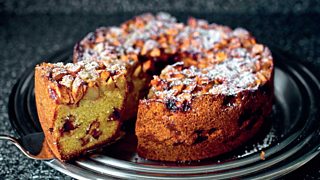Perfect Bread
Sheila Dillon dissects our national loaf. How is most bread made, and what goes into it? And is the time ripe for a new real bread campaign?
This week’s Food Programme dissects our national loaf. How is most bread made and what goes into it? And is the time ripe for a new, real bread campaign?
Andrew Whitley, philosopher/baker and author of Bread Matters, invites Sheila into his kitchen as he bakes a batch of his low-yeast, slow fermented bread, and back in the studio Paul Molyneux of the Federation of Bakers responds to concerns about the nutritional value of mass-produced breads.
During 200 years of industrialisation modern bread has evolved to suit the mass scale. Roller milling, invented in the late 19th century, produced the first truly white flour with bran and wheatgerm removed. The British Empire brought bakers high-protein wheats capable of rising and stretching in a way UK lower-protein grains found difficult. And in 1961 a piece of British technical wizardry in the form of the Chorleywood Bread Process finally allowed those UK grown, lower-protein wheats to achieve that same fluffyness through high speed mixing and additives.
For some, the changes have not been without cost both to the flavour of the breads we eat, and their nutritional value.
Last on
More episodes
Previous
Broadcasts
- Sun 19 Aug 2007 12:32Βι¶ΉΤΌΕΔ Radio 4
- Mon 20 Aug 2007 16:00Βι¶ΉΤΌΕΔ Radio 4
Featured in...
![]()
The Joy of Cakes
Get in the Great British Bake Off spirit with this collection of programmes.
Download this programme
Subscribe to this programme or download individual episodes.
Can comfort foods really make you feel better?
Yes they can, says Sheila Dillon.
Podcast
-
![]()
The Food Programme
Investigating every aspect of the food we eat



